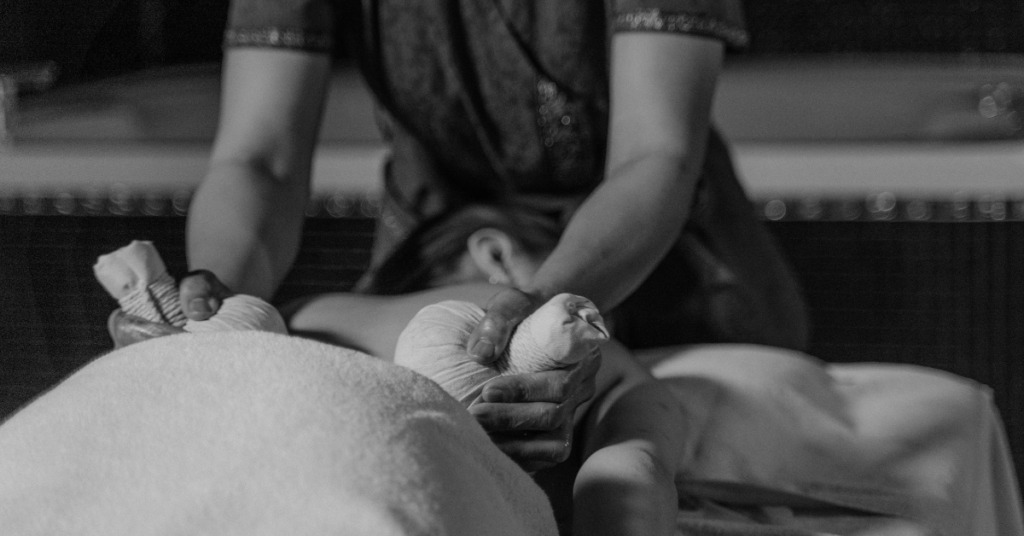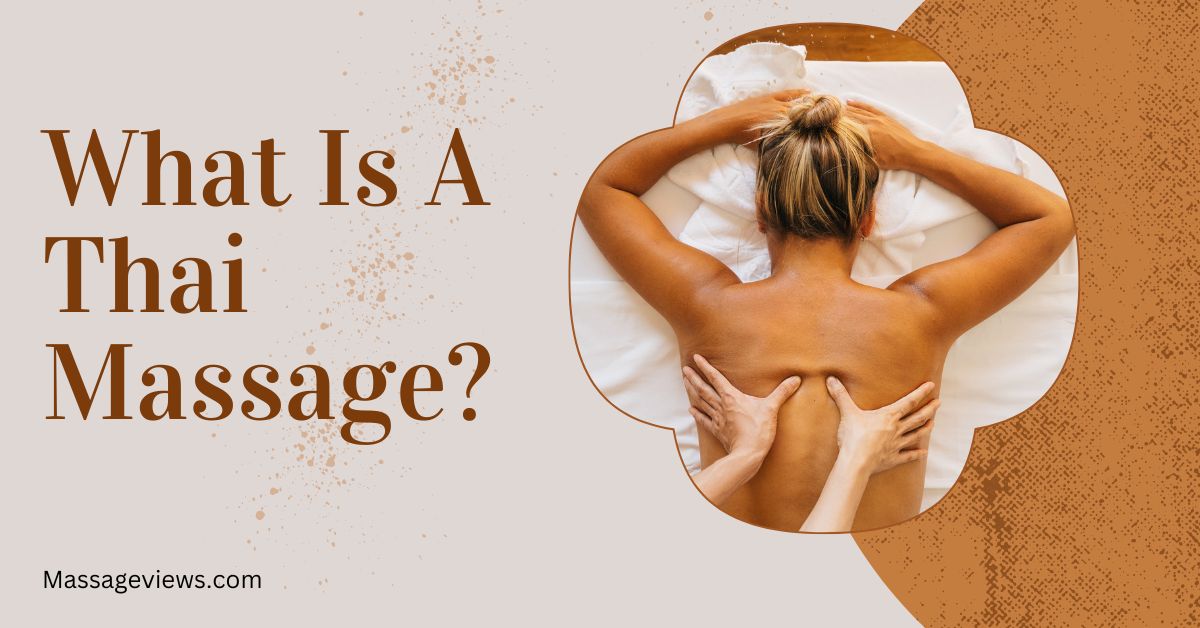Welcome to our exploration of Thai massage – a timeless practice deeply rooted in tradition and culture. In this journey, we’ll delve into the essence of Thai massage, uncovering its origins, techniques, benefits, and what you can expect from a session.
Thai massage isn’t just physical therapy; it’s a holistic approach to well-being that harmonizes the body, mind, and spirit. Originating in Thailand centuries ago, Thai massage reflects the rich tapestry of Thai culture and philosophy. Its techniques have been refined over generations and passed down through the ages to promote health, vitality, and inner peace.
Table of Contents
What is Thai Massage?
Definition and Explanation of Thai Massage
Thai massage is a healing art that incorporates aspects of yoga, acupressure, and meditation together with traditional healing methods. Thai massage, which is based on the idea that the body is an intricate web of energy channels, attempts to bring harmony and balance back by clearing obstructions and encouraging the passage of life force, often referred to as “prana” or “chi.”
Using a combination of rhythmic pressure, mild stretching, and assisted yoga positions, a Thai massage practitioner works on energy points along the body’s energy lines, or “sen lines.” This all-encompassing method promotes a profound sensation of relaxation and well-being by addressing mental, emotional, and bodily tension.
Origins and Historical Background
Thai massage has its roots in ancient India, where it is thought to have been influenced by yoga and Ayurvedic medicine over 2,500 years ago. These therapeutic methods eventually spread throughout Southeast Asia, especially to the kingdom of Siam, which is today Thailand.
Thai massage, which combines aspects of traditional Thai healing arts, Buddhist teachings, and indigenous folk medicine, has developed into a unique type of bodywork in Thailand. Through practical apprenticeships and oral transmission of information, monks and practitioners preserved and improved the practices for the coming centuries.
Cultural Significance
In Thailand, Thai massage is considered a sacred art form as well as a therapeutic activity, with great cultural value. Thai massage, which has its roots in Buddhist philosophy, embraces the concepts of lovingkindness, compassion, and mindfulness.
Thai massage was traditionally performed on the premises of temples, where monks would employ it for therapeutic and spiritual development purposes. Thai massage therapists continue to preserve the age-old customs and ceremonies that have been handed down through the millennia, and the practice is still fundamental to Thai society today.

Techniques Used in Thai Massage
Description of Key Techniques
Thai massage employs a diverse array of techniques, each designed to target specific areas of the body and promote holistic well-being. Here are some of the key techniques commonly used in Thai massage:
- Stretching: Thai massage incorporates a variety of passive stretching techniques that help to increase flexibility and range of motion. These stretches are often performed in a fluid and rhythmic manner, promoting relaxation and releasing tension in the muscles and joints.
- Compression: The practitioner uses their palms, thumbs, elbows, and feet to apply pressure along the body’s energy lines, known as “sen lines.” This gentle compression helps to stimulate circulation, release blockages, and promote the flow of energy throughout the body.
- Acupressure: Similar to acupuncture, Thai massage utilizes acupressure techniques to target specific pressure points along the body’s energy meridians. By applying pressure to these points, the practitioner can help alleviate pain, reduce tension, and restore balance to the body’s energy system.
- Assisted Yoga Poses: Thai massage incorporates elements of yoga by guiding the recipient through a series of assisted yoga poses. These poses help to improve posture, increase flexibility, and promote relaxation by gently stretching and lengthening the muscles.
Further reading: How to give a massage?
How do These Techniques Differ from Other Forms of Massage?
Unlike traditional Western massage techniques, which often focus solely on manipulating the muscles and soft tissues, Thai massage takes a more holistic approach by addressing the body, mind, and spirit as a whole. While both forms of massage can promote relaxation and alleviate muscle tension, Thai massage uniquely combines stretching, compression, acupressure, and assisted yoga poses to promote balance and harmony within the body.
Additionally, Thai massage is typically performed on a mat on the floor, with the recipient fully clothed, whereas Western massage is often conducted on a massage table with the recipient unclothed and draped with sheets. This difference in approach allows for greater flexibility and movement during Thai massage, making it a dynamic and interactive experience for both the practitioner and the recipient.
Benefits of Thai Massage
Physical Benefits
- Improved Flexibility: Thai massage incorporates passive stretching techniques that help to increase flexibility and range of motion in the muscles and joints.
- Pain Relief: By releasing tension and promoting circulation, Thai massage can help alleviate muscle pain and discomfort, including chronic conditions such as back pain and headaches.
- Enhanced Circulation: The rhythmic compression and stretching movements of Thai massage help to stimulate blood flow, improving oxygen and nutrient delivery to tissues and organs throughout the body.
- Better Posture: Thai massage can help improve posture by releasing tight muscles and promoting proper alignment of the spine and joints.
Mental and Emotional Benefits
- Stress Reduction: Thai massage promotes deep relaxation, helping to reduce stress levels and promote a sense of calmness and well-being.
- Mental Clarity: The combination of physical movement and mindful breathing in Thai massage can help clear the mind and improve mental clarity and focus.
- Emotional Well-being: Thai massage encourages a sense of connection between the body and mind, fostering emotional balance and harmony.
Differences Between Traditional Thai Massage and Herbal Thai Massage
Traditional Thai Massage
In traditional Thai massage, the focus is on using techniques such as stretching, compression, and acupressure to promote relaxation, alleviate muscle tension, and improve flexibility. This ancient healing art aims to balance the body’s energy pathways while incorporating elements of yoga to stretch and manipulate the body into various poses.
Herbal Thai Massage
Herbal Thai massage, on the other hand, incorporates the use of heated herbal compresses along with traditional massage techniques. These compresses are typically filled with a blend of aromatic herbs and spices, such as lemongrass, ginger, and turmeric. The warmth and herbal properties of the compresses enhance the therapeutic effects of the massage, providing relief from muscle pain and inflammation while promoting relaxation and detoxification.
Comparison of Techniques and Effects
While both traditional Thai massage and herbal Thai massage share the goal of promoting health and well-being, they differ in their techniques and effects:
- Techniques: Traditional Thai massage primarily focuses on stretching, compression, and acupressure, whereas herbal Thai massage incorporates the use of heated herbal compresses in addition to these techniques.
- Effects: Traditional Thai massage helps to improve flexibility, relieve muscle tension, and promote relaxation through manipulation of the body’s energy pathways. Herbal Thai massage, with its added warmth and herbal properties, offers deeper relaxation, pain relief, and detoxification benefits.
Conclusion
To sum up, Thai massage is a comprehensive process that heals and revitalizes the body, mind, and spirit—it’s more than just physical therapy. Thai massage, which has its roots in Thai culture and dates back thousands of years, uses acupressure, compression, stretching, and assisted yoga positions to enhance balance, relaxation, and overall well-being.
Thai massage works to heal pain, release tension, and bring harmony back into the body through the use of attentive breathing methods and gentle manipulation of the body’s energy pathways. Thai massage provides an oasis of rest and renewal, whether you’re looking for relief from tense muscles, a way to decompress, or just some quiet time.
You’ll discover a haven where the body finds balance, the mind finds clarity, and the spirit finds serenity in the peaceful embrace of Thai massage. Discover the healing effects of Thai massage and set off on a path to rejuvenation and self-discovery.
Frequently Asked Questions
Is Thai massage painful?
Thai massage should not be painful. While you may experience some discomfort during deep stretches or pressure on certain points, it should not be unbearable. Communication with your practitioner is key; let them know if you’re feeling any pain or discomfort so they can adjust accordingly.
Is Thai massage suitable for everyone?
Thai massage is generally safe for most people, but there are certain conditions where caution should be exercised. Individuals with certain medical conditions such as osteoporosis, recent injuries, or certain musculoskeletal disorders should consult with a healthcare professional before receiving Thai massage. Pregnant women should also inform their practitioner and seek specialized prenatal massage.
How long does a Thai massage session typically last?
Thai massage sessions can vary in duration, ranging from 60 to 120 minutes or longer. The length of the session depends on individual preferences, treatment goals, and the practitioner’s recommendations. Longer sessions allow for a more comprehensive treatment and deeper relaxation.
Can Thai massage help with specific health conditions?
Thai massage may offer relief from a variety of health conditions, including back pain, neck tension, headaches, and stress-related ailments. However, it’s essential to consult with a healthcare professional before using Thai massage as a treatment for specific medical conditions. Your practitioner can work with you to develop a personalized treatment plan tailored to your needs.
